Wednesday Apr 24, 2024
Wednesday Apr 24, 2024
Tuesday, 26 December 2017 00:00 - - {{hitsCtrl.values.hits}}
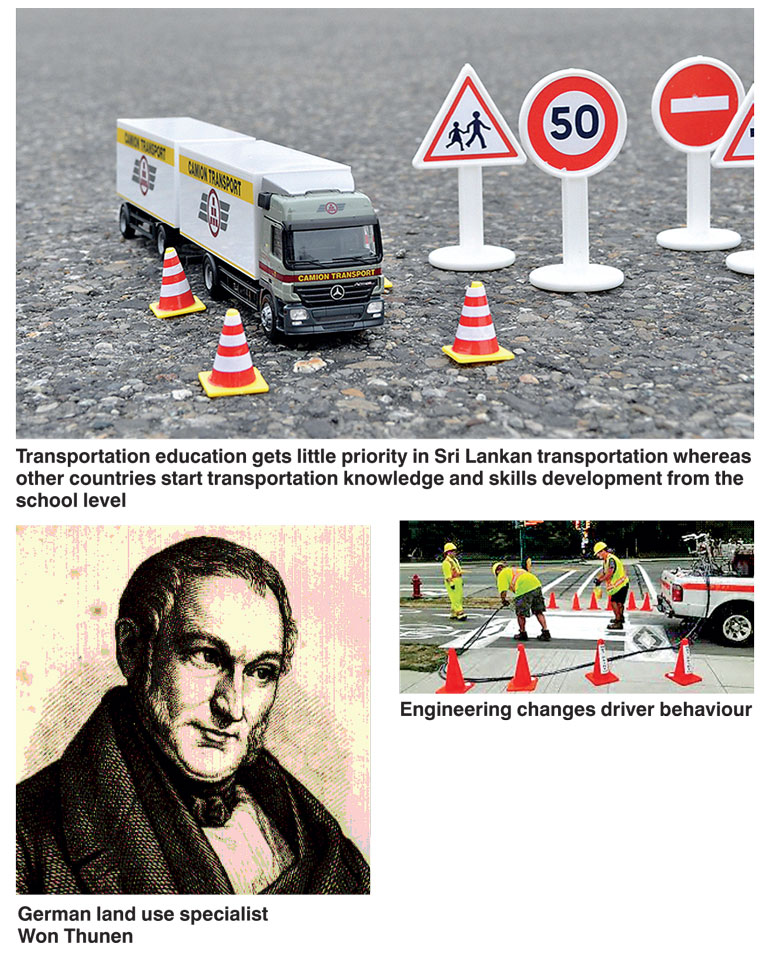
Engineering, enforcement and education are key governing factors in transportation. Sri Lankan transporters are more concerned with engineering and enforcement but not education. It is of paramount importance to carefully touch upon transportation education to excel in the transportation sector.
Transportation is a country’s mirror, which is the very reason western countries are spending a great portion of their income on transportation development, which has great spillover and trickledown effects.
It shows all the facets of the country; that is from individual discipline right up to macroeconomic outlook. Therefore, a Government should plan transportation management in a systematic manner which affects all other sectors. 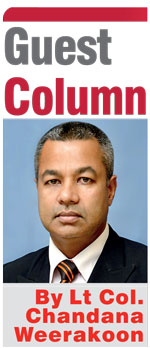
Countries develop transportation based on two basic principles i.e. ubiquity and collective transportation. This particular principle is defined by many attributes like per capita income, population and land use, etc. Developing countries lack transportation knowledge therefore they face difficulties in organising and managing public transportation and they mostly rely on individual transportation, which is ubiquity. This is a costly method of transportation whereas many transportation modes dominate the roads. As an example, motorbikes, three-wheelers and small cars cause congestion, fatalities and other negatives and externalities in transportation.
The three Es are the most important concepts of transportation according to western thinking, i.e. engineering, enforcement and education. Engineering is considered the infrastructure, energy and mode of transportation. Low income countries are lacking in their engineering aspect due to their strained economic status.
Furthermore, there are countries that manage congestion and flow by re-enforcing the other two concepts. Enforcement is not only the legal part of good management but signage and pictogram and lane descriptions are playing vital roles in enforcement. Education plays a greater role in good vehicle and congestion management, which is significantly lacking in Sri Lanka. But developed countries train drivers from a school age. Most of these countries implement these three concepts in a different spectrum and manage uninterrupted and unstressed flows on roads.
Engineering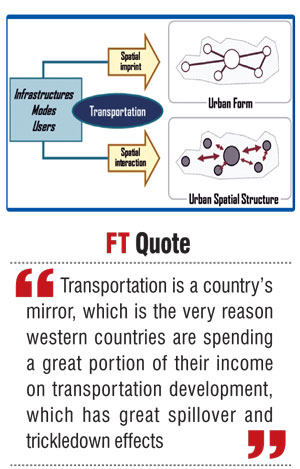
Engineering makes people disciplined on the road. The ancient Romans showed the whole western world this principle. Americans used this to exert hegemony in contemporary history. The Romans’ Appian Way and the Americans freeway concept changed the thinking of the world in terms of transportation infrastructure.
It guides modes, pedestrians, passengers and residents to behave in a disciplined way which respects the governing laws and regulations of a community. That’s the reason western countries focus less on enforcement.
Infrastructure, energy and transportation modes mainly come under engineering. Engineering has the ability to make a remarkable difference in transportation discipline. Infrastructure can change the attitude of people. Examples of this are basic signboards, road marking and signals. It can change the ignorant behavior of drivers and they are forced to adhere to rules.
Therefore, structures can change transport behaviour in different segments. Structures create mirror effects. They show how systematic and methodical the country’s transportation system is.
Further, the transportation imprint of a city shows how urban transportation is planned according to the behavior and requirement of its citizens. The only thing is that sometimes un-scoped development keeps transportation structure redundant when it opts for different business and land uses.
This has been happening in many countries. It has to be planned by professionals concerned with future changes to the business policies of the country. The other thing is the suitable transportation modes for particular cities depending on different requirements, which is spatial interaction, otherwise there will be an increase in transportation congestion in the city like a vicious cycle, therefore, peak hour management has to be considered.
Alternative fuels are the other factor. Basically any country uses two or three kinds of fuels as the energy requirement for transportation. But with the newest technology different fuel systems are embedded in modes of transport which offers more efficiency on roads and helps the environment.
Education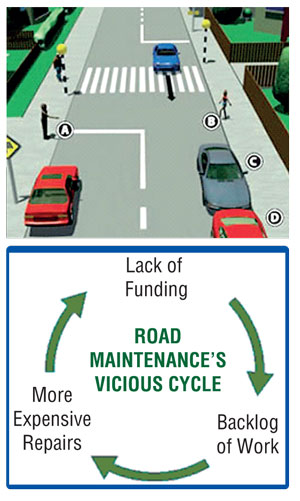
Transportation education gets the least priority in Sri Lankan transportation whereas other countries start transportation knowledge and skills development from the school level. Therefore there is a reduction in road congestion in their countries.
This is not considered an important factor in the Sri Lankan transportation sector. People do not have much knowledge on the transportation sector as well as the skills and discipline that are needed for better transportation. Therefore, this has to be a continuous process of education for the general public.
Most countries test the knowledge and skills of drivers annually before reviewing their licences. What they do is conduct this education through lectures, workshops and different media on an annual basis, which changes the attitudes and behaviour of drivers and pedestrians who use roads.
Attitude is a very important factor, especially for drivers. Though they are knowledgeable, they will act in an indisciplined manner on the road due to a lack of a positive attitude. Therefore, attitudinal changes with driving are a key factor in transportation.
Enforcement
Enforcement is an important factor for drivers using roads according to the law of a country, otherwise road worthiness will be of no use to a particular transport sector. For example, an undisciplined driver can hinder the total flow of transportation in a particular sector. Regulation should be the main reason behind enforcement, but enforcement should not use an income generating model as the country at present experiences. Hence, it has to be a fair trade where everyone comes under the same law and regulations. In addition, it needs to coordinate with different agencies for enforcement like the Colombo Municipal Council, Urban Development Authority, Transportation Commission and all government and private organisations that have different transportation fleets running on the road.
Roads and modes are not the effective areas in the sector but land use management. There is a famous land use theory by Won Thunen, a German land use specialist. He has listed many principles on land use in order to manage a smooth and effective transportation imprint of an area. Sri Lankan administrators are not following the theories of land use.
Also in 1925, Burgess, an American scholar, presented a descriptive urban land use model which divided cities into a set of concentric circles expanding from the downtown area to the suburbs.
This representation was built from Burgess’ observations of a number of American cities, notably Chicago, for which he provided empirical evidence. The model assumes a relationship between the socioeconomic status of households and the distance from the Central Business District (CBD).
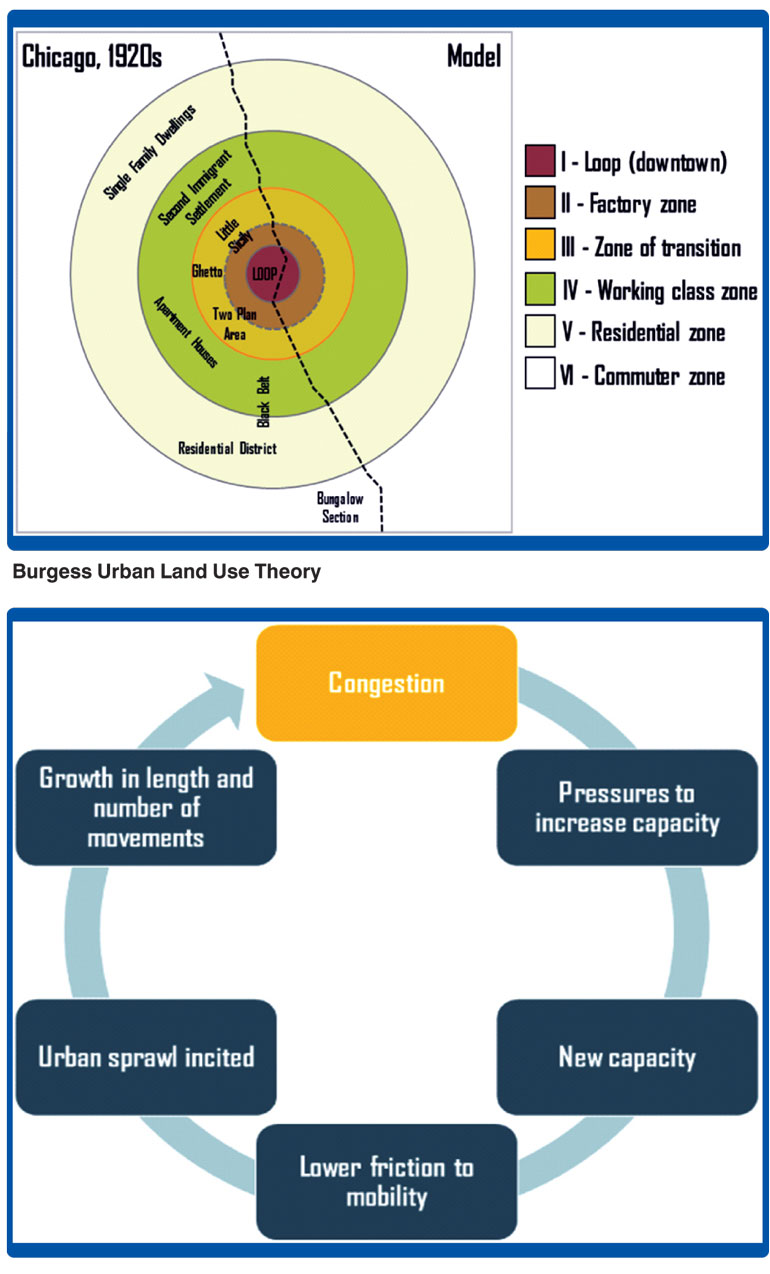
Conclusion
However, congestion is a cycle which needs continuous adjustments and analysis; failing to do so creates a vicious cycle of congestion. Rather than the construction of a road network, land use management can control the transportation cycle and make it an efficient cycle. Therefore, education and engineering should get more priority than enforcement.
Countries with a higher happiness index are following the above rules. They believe that education and engineering will create a motivated population and enforcement should be used as a final tool. Sri Lanka has low standards of transportation and knowledge of the transportation business like logistics, shipping and passenger movements, etc.
(The writer is a Chartered Transporter. He can be reached at [email protected].)